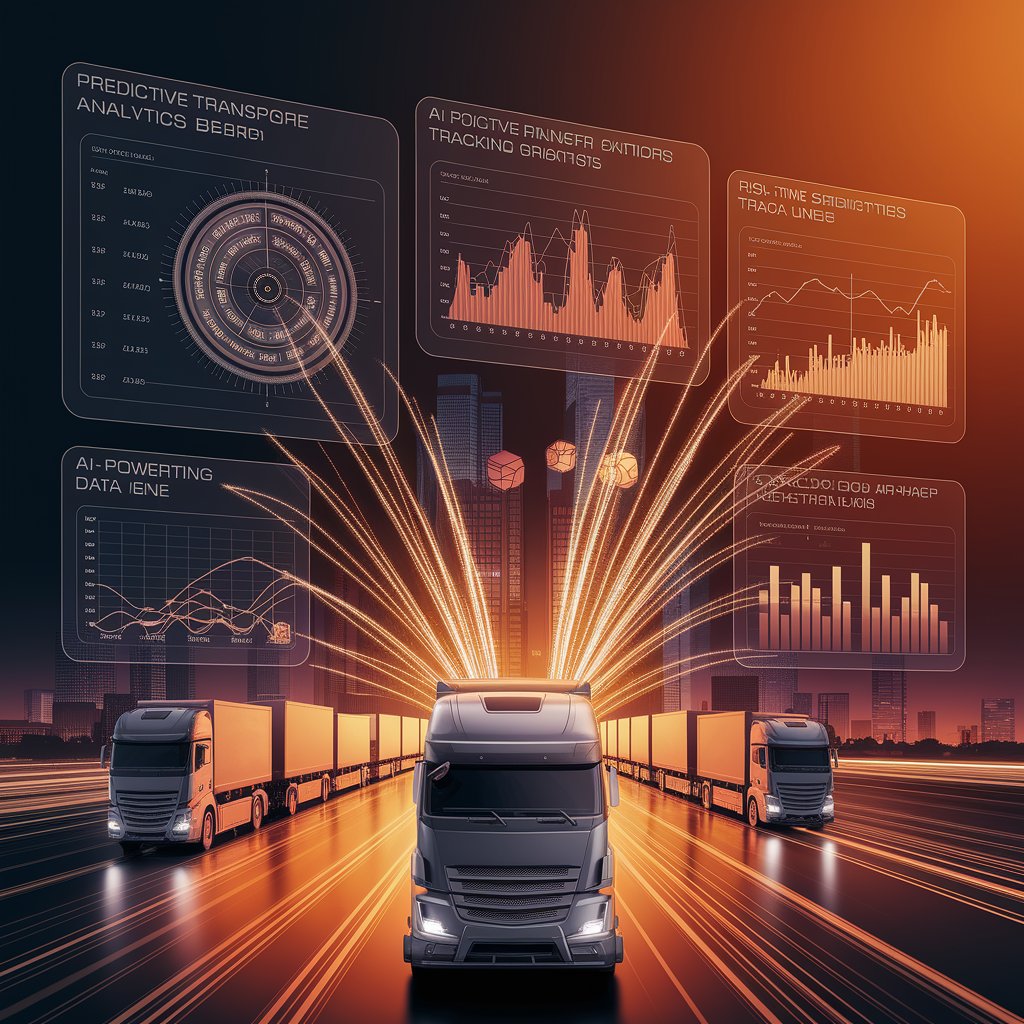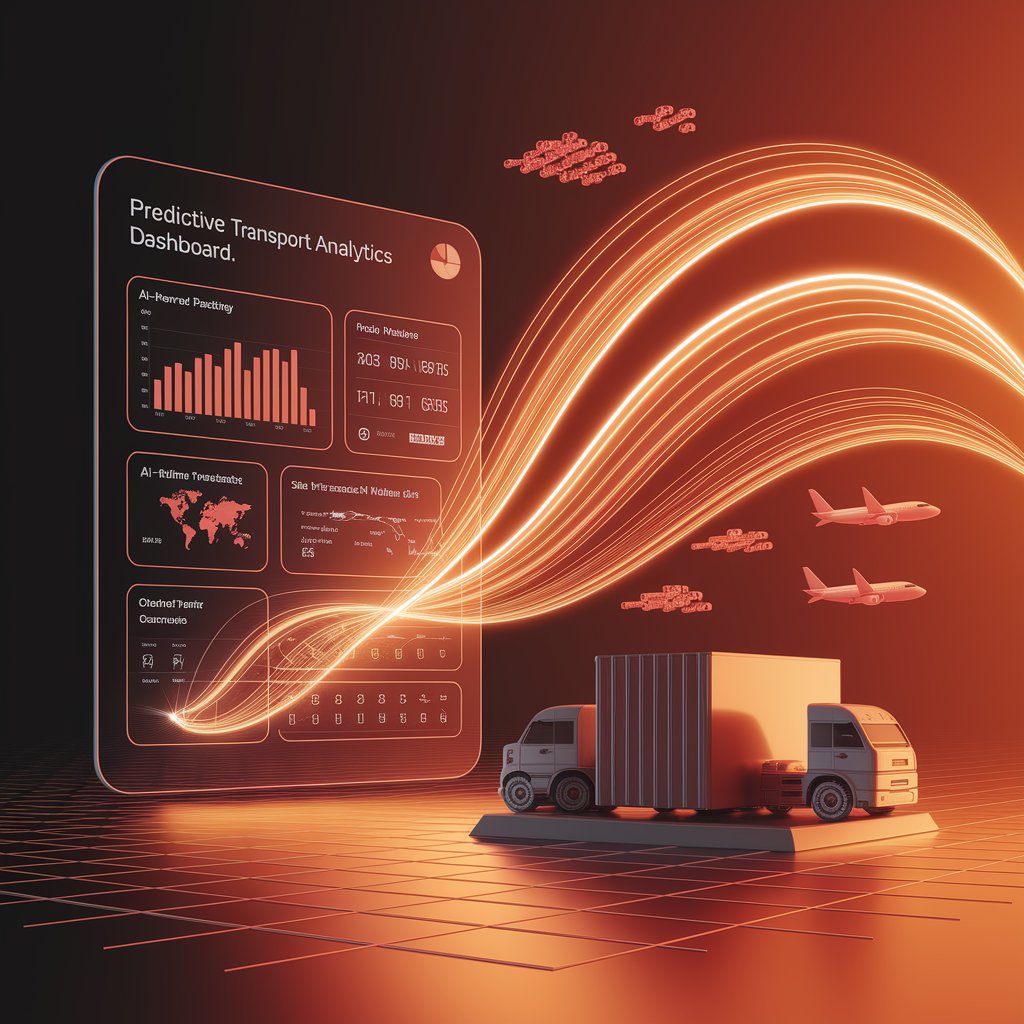Predictive Transport Analytics: Driving Smarter Logistics Decisions

Introduction
That’s why companies are turning to predictive transport analytics. By leveraging AI, machine learning, and real-time data, logistics providers can forecast disruptions, optimize routes, and make proactive decisions that keep freight moving efficiently.
What Is Predictive Transport Analytics?
Predictive transport analytics is the use of advanced data analysis, machine learning models, and real-time feeds to anticipate transportation trends and outcomes. Instead of simply reacting to delays or cost spikes, businesses can forecast future scenarios—from traffic flow and fuel consumption to shipment demand and capacity shortages.
This approach shifts logistics from reactive problem-solving to proactive optimization.

Key Features of Predictive Transport Analytics
- Demand Forecasting – Predict shipment volumes across lanes and seasons.
- Route Optimization – Anticipate congestion and recommend the fastest, most efficient paths.
- Fuel Consumption Modeling – Forecast costs and adjust fleet strategies.
- Risk Prediction – Identify potential delays due to weather, strikes, or regulations.
- Driver & Fleet Insights – Monitor utilization and performance trends.
- Integrated Dashboards – Visualize predictions in real time across regions.
Benefits of Predictive Transport Analytics
- Reduced Costs – Optimize fleet use, minimize fuel waste, and avoid penalties.
- Improved On-Time Delivery – Anticipate disruptions and reroute proactively.
- Higher Efficiency – Streamline scheduling and asset allocation.
- Risk Mitigation – Spot vulnerabilities before they affect shipments.
- Customer Satisfaction – Deliver accurate ETAs and proactive updates.
- Sustainability – Lower carbon footprint through efficient planning.

Real-World Applications
- Freight Forwarders – Forecast demand to secure carrier capacity early.
- Carriers – Optimize routes and fleet utilization in volatile conditions.
- E-commerce Logistics – Predict seasonal surges like Black Friday or holiday sales.
- Cold Chain Providers – Anticipate delays that could impact sensitive shipments.
- Global Shippers – Use predictive insights to manage international trade lanes.
Challenges in Predictive Transport Analytics
- Data Fragmentation – Disconnected systems reduce prediction accuracy.
- Integration Complexity – ERP, WMS, and TMS systems must share reliable data.
- High Initial Investment – AI-driven analytics require upfront resources.
- Cybersecurity Risks – Predictive data platforms must safeguard sensitive logistics info.
- Change Resistance – Teams accustomed to traditional methods may hesitate.

Best Practices for Success
- Start with High-Impact Lanes – Apply predictive analytics to routes with the biggest ROI potential.
- Integrate Data Sources – Ensure ERP, TMS, and IoT connectivity for accuracy.
- Leverage Machine Learning – Use AI to continuously refine predictions.
- Combine Human & AI Insights – Balance analytics with logistics planner expertise.
- Measure ROI – Track cost savings, efficiency gains, and delivery performance.
- Iterate Continuously – Update models as new disruptions and data emerge.
The Future of Predictive Transport Analytics
- Autonomous Decision Engines – AI platforms adjusting schedules without human input.
- Digital Twin Networks – Simulations of transport flows to test strategies.
- Blockchain-Enhanced Predictions – Secure, transparent transport data streams.
- Edge AI for Fleets – Predictions made directly in trucks and vessels.
- Green Transport Forecasting – AI balancing efficiency with sustainability goals.
Conclusion
Predictive transport analytics is redefining logistics by transforming uncertainty into opportunity. With AI-driven forecasts and scenario modeling, companies can reduce costs, improve efficiency, and ensure resilience in global supply chains.
For freight forwarders, carriers, and shippers, adopting predictive transport analytics isn’t just about better reporting—it’s about building smarter, proactive logistics strategies.
